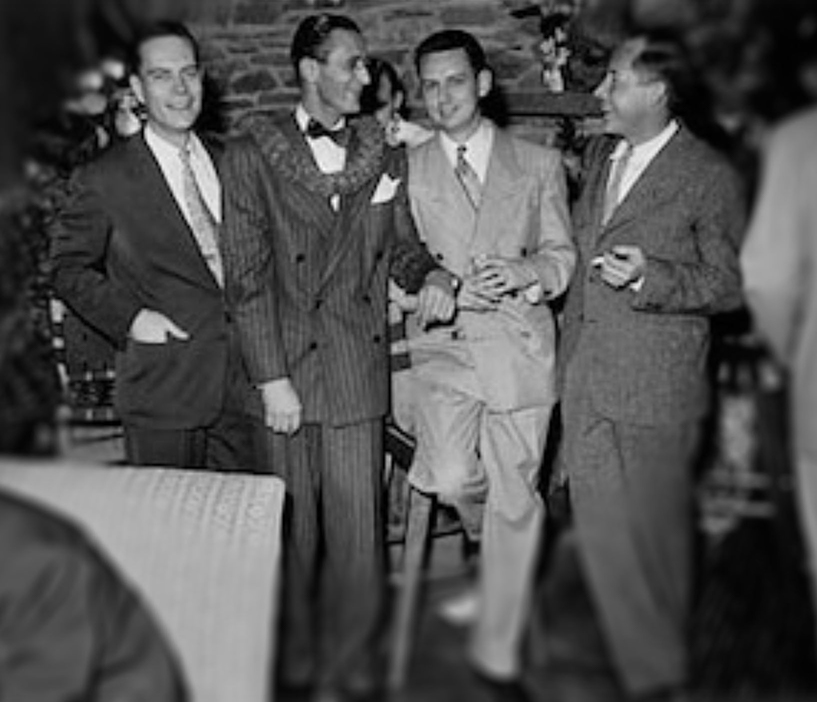“This is, then, a complicated problem.” (Adv, June 8, 1965)
In 1924, Robert Hind purchased 2,090-acres and established the Hind-Clarke Dairy. The Hind-Clarke Dairy was a favored stop along the road, as noted in a 1930 visitor’s guide …
“The Hind-Clarke Dairy, a short way ahead and to our left with a large sign over the entrance, is not to be passed unnoticed. The dairy is a model of its kind and well affords an opportunity to see dairying in its most scientific form. The cottage cheese on sale is, perhaps, the most delicious you have ever tasted.” (Cultural Surveys)
(The Hind Clark Dairy operation occupied the area now used as ʻĀina Haina Shopping Center and ʻĀina Haina Elementary School.)
In 1946, Hind sold his dairy operation to Creameries of America, and soon after that began to develop the remainder of his land for residential use. The former cattle pasture was subdivided into lots to form a new residential community called ‘Āina Haina (which means, “Hind’s land.”)
Soon after this the Hawaiian Dredging Company filled in the old Wailupe Fishpond, forming the Wailupe Circle subdivision. A deep channel (depth of approximately 12 to 20 feet) was dredged around the pond, as well as a channel through the reef to the open ocean) and dredge material filled in the pond.
“[W]hen Aina Haina was first developed commercial zoning was asked for [the ‘village green’ strip of open space fronting Aina Haina]. But area home owners objected and it was finally agreed by all in 1948 to leave the area open space. It was put into a “residential” zoning classification because that was the only suitable category where it could be kept open.”
“The ‘village green’ at Aina Haina is used for recreation purposes, including community carnivals, Lions Club chicken barbecues, Little League practice, dog obedience club training, and just plain playing for kids while parents shop. But it is also true that there are several other playgrounds in the Aina Haina area, including one at the nearby Aina Haina School.”
“The open view – looking across the green lawn, to the low line of shops and into the deep valley – is one of the more interesting and attractive along a highway that is becoming increasingly closed in from sight of either mountains or sea. The alternative, no matter how handsome a structure, is hardly likely to equal the open vista.”
Fast forward, “Opinion is Aina Haina is split over the City Planning Commission’s recommendation to rezone the Aina Haina village green for commercial use.” (Adv, June 5, 1965)
“The 75,385 square feet of ‘residential’ land is a tax burden as it now stands. The comprehensive zoning plan, although parts of it can and are being speeded, is several months or more away from completion. Its adoption, however, will provide the Preservation District classification.”
“Presumably this would eliminate the economic hardship argument, although seemingly there would be more profit in commercial buildings than in tax relief.”
“The need for more commercial building in this area seems doubtful. There are four shopping centers from Waialae-Kahala to Koko Head. The neighboring Niu Shopping Center has a number of store spaces still for rent.” (Adv, June 8, 1965)
“Developer Kenneth Makinney has proposed changing the area zoning from residential to commercial, so that he can construct an addition to the Aina Haina Shopping Center.” (Adv, June 30, 1965) The ‘Āina Haina Shopping Center was built in 1950.
“City Councilmen approved by 7 to 1 vote yesterday commercial zoning for Aina Haina’s village green. … ‘This is an old story in Honolulu.’”
“‘ This isn’t the first time, nor will it be the last time, for land developers to break faith with the City government and the gullible people who are talked int trusting and believing them.’” (said Councilman Frank Fasi, the lone negative vote; Adv, Aug 4, 1965)
One of the first businesses built on the former village green was Hawai‘i’s first McDonald’s, and Ray Kroc showed up for the opening.
“Kroc first realized the possibilities of developing a big franchise operation in the early 1950s, when he was selling mixing machines to make malted milks.”
“Two brothers named McDonald installed eight of his machines in one burger facility in San Bernadino, Calif, and Kroc woke up to the kind of volume business that was possible.”
“He said the McDonalds had developed a formula for a quality hamburger and a new way to doing business which is now the trademark of the McDonald’s chain. … In 1960, Kroc borrowed $2.7 million to buy … from the McDonalds and to buy the sole right to the use of the name and hamburger merchandising ideas.” (SB, Nov 8, 1968)
“Kroc officially opened the Aina Haina unit yesterday [November 7, 1968] but it has been open for business since last weekend.” (SB, Nov 8, 1968)
At the time McDonald’s opened in Hawai‘i with the ‘Āina Haina unit, there were about 1,100 McDonalds spread across the US; in 2023, the company operated and franchised approximately 41,000 restaurants globally (with a plan to grow to 50,000 by 2027).




































